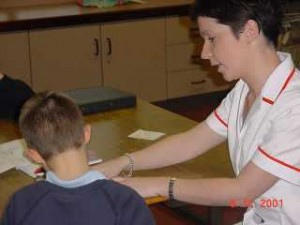A dentalized lisp is similar to a frontal or interdental lisp. With a frontal lisp, the child protrudes the tongue through the front teeth when pronouncing the “s” and “z” sounds. Children with a dentalized lisp push the tongue up against the front teeth, rather than through the front teeth. A dentalized lisp may arise during typical speech development. Some children with a dentalized lisp “grow out of it” by the time they are about four years old. However, it’s always best to bring your child to a speech-language pathologist (SLP), even if you think he might grow out of his articulation difficulty.
Understanding Palatal Lisps
Pronunciation & Lisps Speech DisordersSometimes, a child can naturally “grow out of” a lisp. However, a palatal lisp is not a developmental problem, which means that your child is not likely to grow out of it. A palatal lisp occurs when your child touches the middle of his tongue to the soft palate when he pronounces the “s” and “z” sounds.
Understanding Frontal Lisps
Pronunciation & Lisps Speech DisordersChildren with a lisp have trouble articulating the “z” and “s” sounds. While young children often have trouble pronouncing sounds, children over the age of eight can typically articulate the “s” sound. Children typically begin to learn the “z” sound at about four years of age, and they typically have a firm grasp on the sound by the time they are eight. If your child is over the age of eight and still displays a lisp, have him evaluated by a speech-language pathologist (SLP). It’s also a good idea to bring him to an SLP earlier if you think he may be displaying a language delay. The earlier a child with a lisp receives speech therapy, the more readily his articulation may be corrected.



